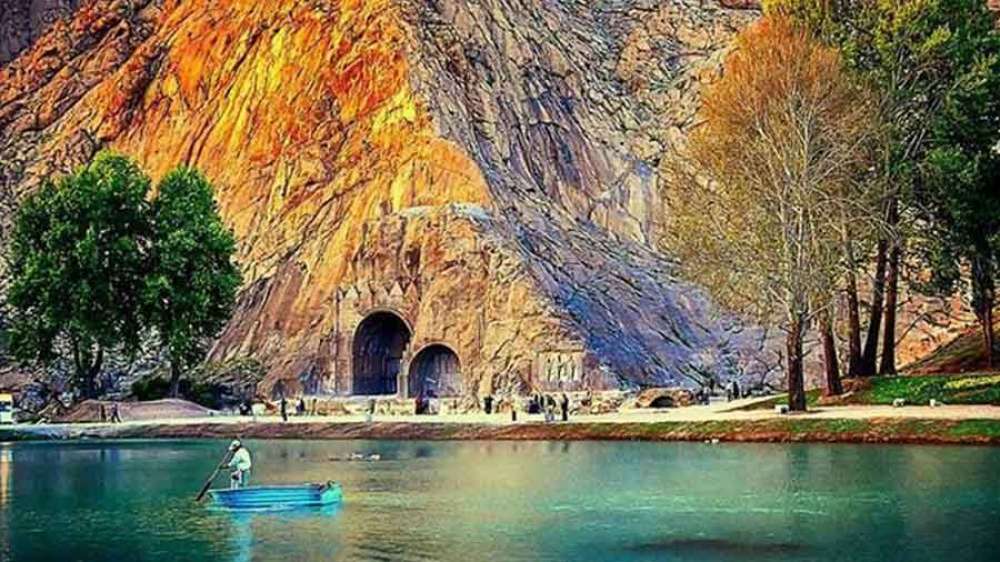Overview
Overview
The name Kerman is probably derived from its inhabitants, the Germanioi, mentioned by Herodotus. The Town is situated close to Dasht-e-Lut desert from which it is separated by a range of mountains. Although this region is situated in a desert, its pistachio , grown principally in the Rafsanjan-Kerman area, is the most popular nut in Iran, though walnuts, almonds, and hazel nuts are also eaten; so too is melon seed, which has first to be adroitly split with the teeth to extract the edible kernel. A variety of nuts, seeds and dried fruits, known collectively as Ajil are eaten before and after meals and particularly in Iranian parties. The most well-known crafts of the region are the local leather industry and silk embroidery.
Sight seeing
Sight Seeing
Ganj-Ali Khan Ensemble: This is located at a wonderfully frescoed intersection of two main lines of arcades, with caravanserais, a teahouse, and a traditional hammam, today transformed into a museum
Shrine of Shah Nematollah Vali: This shrine is built in 1436 and embellished and extended by Shah Abbas, set in a delightful garden evoking great harmony, and Iran’s most splendid Islamic monument outside Isfahan.
Jabbalieha: It is a mysterious, octagonal stone structure with a brick dome, whose function is unknown, in a picturesque setting at the foot of the mountains.
Rayen Citadel: It is a residential fortress and the largest mud structure of the wider region comprising thick imposing outer walls, public quarter, gymnasium, mosque, barracks, and governor’s quarter.
Jami‘ Mosque of Kerman: the well-preserved 14th century monument with four lofty Iwans of shimmering blue tiles and without minarets, extensively modernized during the Safavid period and later.
Bam and its Cultural Landscape: (World Heritage Site) once a famous citadel and a strategic stronghold, the old Bam has been built on a huge rock mass at the northeast of the living town, and is a city molded in the red clay of the Great Iranian Desert, Dasht-e Kavir. Locally, it is called “Arge Bam” meaning Bam citadel, 300 m long and 200 m wide, consisting of two parts. It is similar to a large medieval European castle, except that the material is not stone but brick. It is surrounded by a more than three-kilometer long crenellated wall supported by dozens of towers for the defense of the town.
Shazdeh Garden: Shazdeh Garden meaning Prince’s Garden is a historical Persian garden located near Mahan in Kerman province. It consists of an entrance structure and gate at the lower end and a two-floor residential structure at the upper end. The distance between these two is ornamented with water fountains that are engine by the natural incline of the land. The garden is a fine example of Persian gardens that take advantage of suitable natural climate.
Khajeh Atabeig Mausoleum: The historic mausoleum of Khajeh Atabeing is a twelfth century building that looks a square building, while octagonal from outside. Its gypsum moldings and prettily patterned brickwork, costly marble slabs and fine Kuffic inscriptions are extremely worthy of note.
Anglican Church of St. Andrew: The Anglican Church of St. Andrew, a building easily missed from the street, is hidden in a garden behind a doorway in Shariati Avenue marked with the Persian Cross characteristic of all the Anglican churches in Iran. The small flock seems largely to have been forgotten by headquarters in Canterbury except for goodwill cards at Christmas and Easter, and fellow-believers are assured of a warm welcome
Shahdad Kaloot: These Kalouts are located in an area 40 km east and north east of Shahdad. They have been generated by the the extreme soil and water erosion and extend from north-west to the south-east of the region. The Kaluts cover part of the western fringe of the Lut desert with an average length of 145 km. There is little vegetation in the desert region. In the addition to the Kaluts, there are other beautiful attractions to the east of Kerman, the lowest region of the Lut desert to the east of a salt mine called Gowd-e Namak, which is situated in the western region of the Kaluts.


















 twitter
twitter
 Google
Google LinkedIn
LinkedIn instagram
instagram